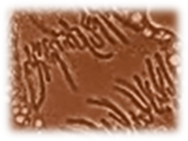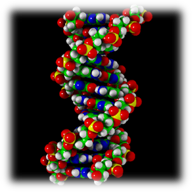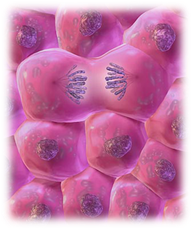CHARACTERISTICS
OF ALL LIVING THINGS
Living things are referred to as organisms. Organisms can be bacteria, protists, fungi, plants, or
animals. Even though there is great diversity among all living things, there
are certain traits that all organisms share.
Listed below are the basic characteristics of all living things. Keep in mind, for something to be considered living it must demonstrate all of these
properties at some stage in the organism’s life. Throughout the following
units, we will delve into each characteristic more fully. It also should be
noted here that it is a common misconception to believe that viruses are living
things. This is not true because viruses
do not carry out the following characteristics of living things.
|
|
1.
All living things
must demonstrate CELLULAR
ORGANIZATION. All living things are made up of
tiny units called cells. Cells are the smallest unit capable
of all life functions. Some organisms consist of one cell and are called unicellular
organisms, while organisms that consist of many cells are called multicellular
organisms. Each type of cell has
its own specific structure and function. |
||||
|
2. All living things carry out METABOLISM. Metabolism is the
sum of all chemical reactions carried out in an organism. From the smallest unicellular organism to the most complex
multicellular organism, all species have a way to obtain food/energy. All
organisms need to use chemical processes to convert the ‘food’ to
energy. Moreover, organisms use
chemical processes for other functions as well. Transport, repair, and growth are some of
the functions that require chemical processes. Sometimes, the organism relies
on another for its food. In this case,
the organism is heterotrophic. Conversely, if an organism can generate
its own energy, it is autotrophic.
Humans are an example of heterotrophs, while plants are considered
autotrophs. |
|
||||
|
|
3. All living things
must demonstrate HOMEOSTASIS. Homeostasis
is the ability of an organism to maintain a constant
internal environment regardless of changes in the organism’s external
environment. For an organism to survive, it must exhibit successful
homeostasis. An example of homeostasis
is shivering in cold weather when the weather causes your body temperature to
go below 98.6˚F. The shivering is
caused by the rapid contacting and relaxing of skeletal muscles which produce
the “heat” required to reestablish the internal environment or internal
temperature of about 98.6˚F. When
you sweat, your body temperature is above 98.6˚F. Sweating is the body’s
way of releasing water which is where the heat is being stored. Sweating will
lower your body temperature back down to 98.6˚F where it wants and needs
to be. Trying to maintain a body temperature of 98.6˚F is a perfect
example of HOMEOSTASIS. |
||||
|
4. All living things must have the ability to REPRODUCE. Reproduction
is the process by which organisms make more of their
own kind from one generation to the next. All living things come from
other living things. Although the
processes might involve different steps, all types of cells and organisms do
reproduce. Some reproduce asexually
where there is no recombination of genetic information and every offspring is
identical to the parent. Others
reproduce sexually, where the genetic information of the parents is
combined, shuffled, and redistributed so that the offspring are not identical
to the parent. |
|||||
|
|
5. All living things must demonstrate RESPONSIVENESS. Responsiveness
is the ability of an organism to respond to changes
in their environment. The
organism’s change is referred to as a response and the change in the
environment which caused the organism to change is referred to as a stimulus.
Plants bending toward sunlight as they grow and birds fluffing their feathers
to insulate their body during cold weather are two examples of responsiveness. |
||||
|
6. All living things
must demonstrate HEREDITY. Heredity
is the passing of traits from parent to offspring. Inherited
traits change over generations in all living things. This generational change
in traits is referred to as evolution and is also tied in with adaptation.
When an organism changes—physiologically, structurally, or behaviorally—as a
survival response to changes in environment, it is called an adaptation which
results in evolution. |
|
||||
|
|
7. All living things
must demonstrate GROWTH. Growth can be observed two
different ways. Growth can be in terms
of increasing the number of cells which is called Cell Division, or it
can be in terms of a particular cell becoming larger which is called Cell
Enlargement. Both methods of growth result in the organism, unicellular
or multicellular, becoming larger. Another item to mention with growth
pertains to multicellular organisms. As organisms grow, many change. This
process of change is called development. |
||||
![]() Cells: The Basic
Units of Life
Cells: The Basic
Units of Life
Levels of
Organization
In unicellular (single-celled)
organisms, the single cell performs all life functions. It functions
independently. However, multicellular (many celled) organisms have various
levels of organization within them. Individual cells perform specific functions
and also work together for the good of the entire organism. The cells become
dependent on one another.
Multicellular organisms have the
following 5 levels of organization, ranging from simplest to most complex, that
then continue beyond the independent organism as is shown below and will be
further discussed in upcoming lessons.
|
Level
1 |
CELLS |
·
Cells are
the basic unit of structure and function in all living things. · In a multicellular organism, each cell performs a specific
function for the organism. · In a unicellular organism, the cell performs all of the
functions for the organism. ·
Multicellular examples: skeletal muscle cell, parenchyma
cell (plant root cell) |
|
Level
2 |
TISSUE |
·
Tissues
are made up of a group of cells that are similar in
structure and function and which work together to perform a specific
function. ·
Examples: skeletal muscle tissue, ground tissue (in plant
roots) |
|
Level
3 |
ORGAN |
·
An organ
is made up of a collection of tissues that work together to carry out a
specialized function. ·
Examples: biceps brachii (muscle of your upper arm), root
of a plant |
|
Level
4 |
ORGAN SYSTEM |
· An organ system is made up of a group of organs that work
together to perform a specific function for the organism. · Examples:
Skeletal Muscle System, Root System |
|
Level
5 |
ORGANISM |
·
In
multicellular organisms, an organism is made up of all of the organ systems
working together to carry out all of the life processes for the survival of
the organism. (Example: Human, Oak
Tree) ·
In
unicellular organisms, this level is made up of only the one cell from level
1. (Example: Bacteria, Protist) |
|
Level
6 |
POPULATION |
·
Example: All of the Cardinals (species of bird) that live
in Jefferson County, Ohio. |
|
Level
7 |
COMMUNITY |
·
A
community is a group of various species or populations that live in the same
habitat and interact with each other. ·
Example: All of the Cardinals, Earthworms, and Oak Trees
that live in Jefferson County, Ohio. |
|
Level
8 |
ECOSYSTEM |
·
An
ecosystem is a community of organisms and their nonliving (abiotic) or
physical environment. ·
Examples: All of the Cardinals, Earthworms, Oak Trees,
Streams, River, Sunlight, and Soil. |
|
Level
9 |
BIOSPHERE |
·
The
biosphere is a region of Earth’s crust, waters, and atmosphere inhabited by
living things. |
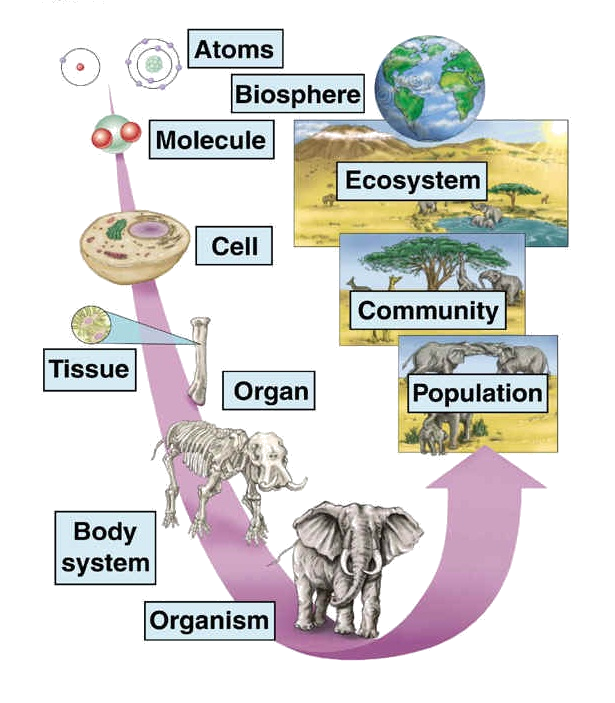
Click on the Quizlet icon below to
access the quizlet.com vocabulary flash cards. Review the vocabulary before
completing your assessment.
 Now answer questions 1 through 25.
Now answer questions 1 through 25.
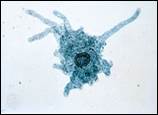
![MPj04284780000[1]](SCIBBIOU02_Characteristics_Things_image004.png)
![MCPE07665_0000[1]](SCIBBIOU02_Characteristics_Things_image006.png)
